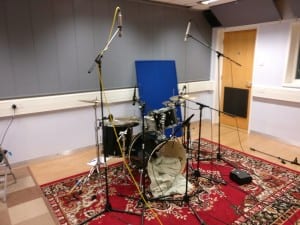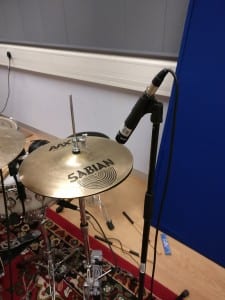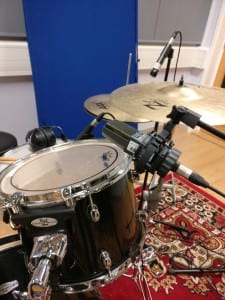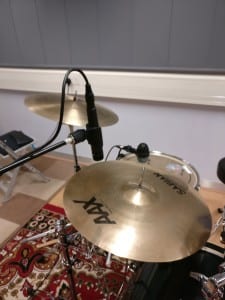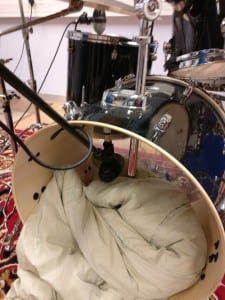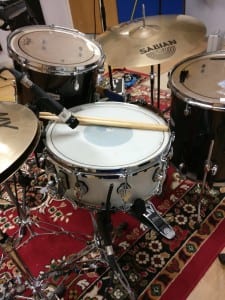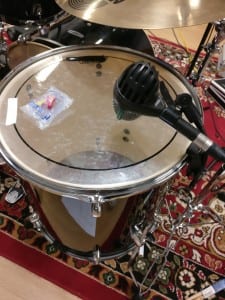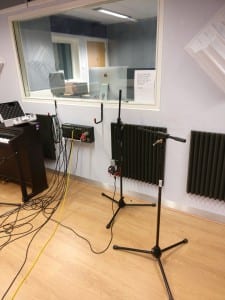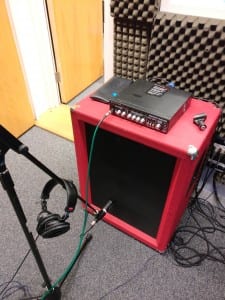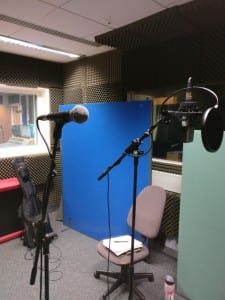Today I mixed down the four tracks for this project, hopefully ready to submit. I feel like they are mixed as well as they can be and used several of the techniques that I listed in my previous post (“Mixing Drums and Vocals Checklist”).
The first thing to mention is that I am really pleased with how each track was captured and believe this shows in the mix. Every aspect of each track is a direct improvement on anything I have previously captured in other projects and I’m particularly happy about how drums sounded, even pre-mix, compared to my submission for this project in semester A. Following this blog post will be a post directly comparing the drums and vocals from this project with those of my previous one. Given that the recording and mixing of drums and vocals encompassed three of my four learning outcomes, I feel that this project has been really successful.
The first item on my mixing checklist was to simply pan the toms left and right, in accordance with Butch Vig. This is a common technique and can be seen as part of the mixer for ‘Lone Gazelle’ in the image below.

Next on the list was the heavy compression of the room mic, which I actually used in the mix a lot more than initially expected. I had thought that due to the nature of the room sound in the live room of the university multitrack that I would be using as little of the room microphone as possible but I was pleasantly surprised by how it sounded when blended with the rest of the drum mics. Through research I have identified that both Butch Vig and Chris Sheldon noted the use of heavy compression on the room mic(s) and so I replicated this through the compressor on Logic, the settings of which can be seen in the image below.
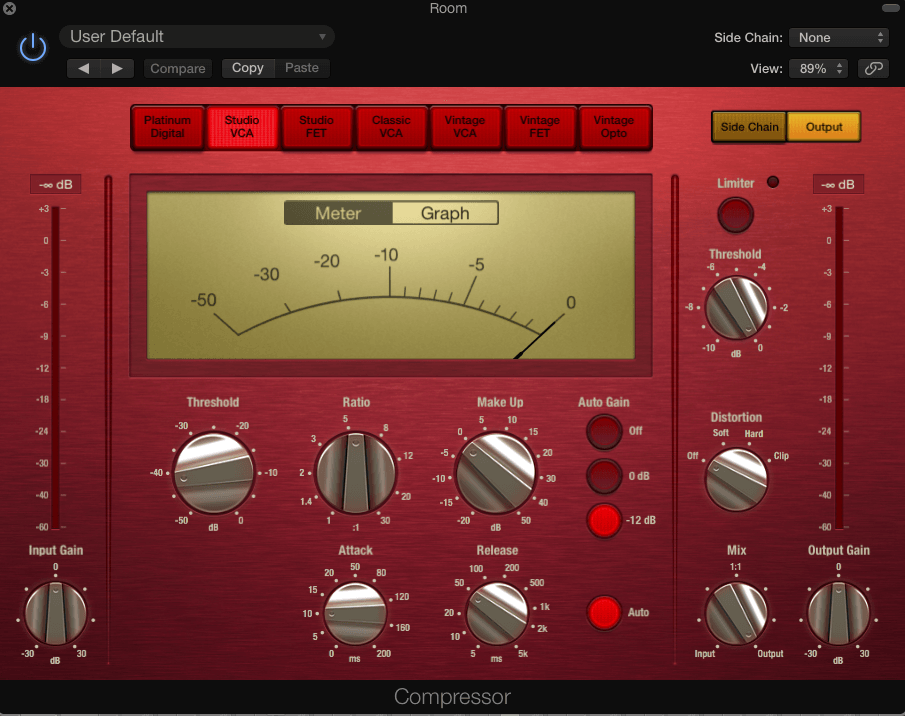
Chris Sheldon also noted the importance of compression on the kick and snare drums, which was also added. The snare, recorded in two tracks (top and bottom) was also sent through a bus to another compressor to mesh the two tracks together. The kick drum was side-chained to the bass guitar track(s) in order for the bass to lower in volume to allow the kick drum to be more dominant and avoid the two masking each other.
Butch Vig claimed that the room mics can clog up a mix, in the 300-500Hz range, but I did not encounter any issues with this, perhaps due to where I placed the room microphone. I hardly needed to use any EQ on the room mic and only lightly boosted between 5 and 10kHz in order to bring out the overheads a little more.
Vig notes that he pushes up the room mics in certain, quieter sections of tracks and this is something I replicated in each of my tracks because I think it really worked in the mix and added depth the stripped-back sound of the band. It should be easily audible in the final tracks but here is the automation for the room mic for the track ‘Lone Gazelle.’

The two aspects of mixing drums that I found through researching 1979 by the Smashing Pumpkins (part of my influences playlist) were not used. Firstly, distorting the drums was something that I tried for each track but due to the relatively clean nature of the recordings of each of the other instruments and the nature of the tracks musically, I felt it sounded out of place. Even using light distortion on the snare drum, which I regularly do, didn’t sound quite right. I also refrained from using a gate on the snare as suggested by my post on 1979. Again, musically it didn’t sound right.
For vocals, I used the Butch Vig Vocals plug-in by Waves on all three of the tracks in the EP which feature vocals, and it worked really well. It did need other plug-ins to make it sit properly in the mix but on the whole it was a success. The controls for EQ (in this case called ‘Lows’, ‘Presence’ and ‘Air’) were great for getting the most out of Ben’s voice and were also used heavily on the backing vocals. These had more ‘Air’ than the lead vocals had and much less ‘Lows’ and ‘Presence’ in order for them to be less prominent elements of each track. The plug-in also included a nice-sounding compressor that was also used throughout. The vocals were heavily compressed due to the differing intensity of Ben’s voice throughout each section of each track and this aligns with Chris Sheldon’s view on vocal compression which is part of my list of mixing techniques to use.
I also doubled-tracked several of the lead vocal parts, noticeably in ‘Lone Gazelle’ and ‘200% Gentleman’, which added power to vocals and also replicated the technique that Butch Vig demonstrated in ‘Drain You’ (part of my influences playlist). As in Drain You, the two vocal parts are panned centrally, rather than hard left and right, which means that you get a slight chorus effect. The channel strips for the chorus vocals in Lone Gazelle can be seen below.
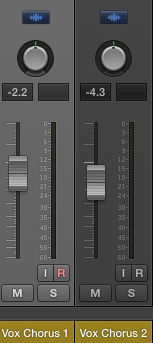
The backing vocals throughout the project are double tracked as well and panned varyingly left and right to add space, as heard in 1979.
In terms of guitars and bass, I didn’t do anything particularly unusual when mixing and for the most part I found these two aspects to be the most simple. There is doubletracking of guitars right the way through the project and they are generally panned hard left and right, mostly playing the same part. The bass was recorded with both DI and an SM57 on the bass cab and I only used the DI in one of the tracks (200% Gentleman) to blend with the mic capture.
Overall I think my mixes of the tracks on the EP achieve everything I set out to and I’m happy with the final outcome.














